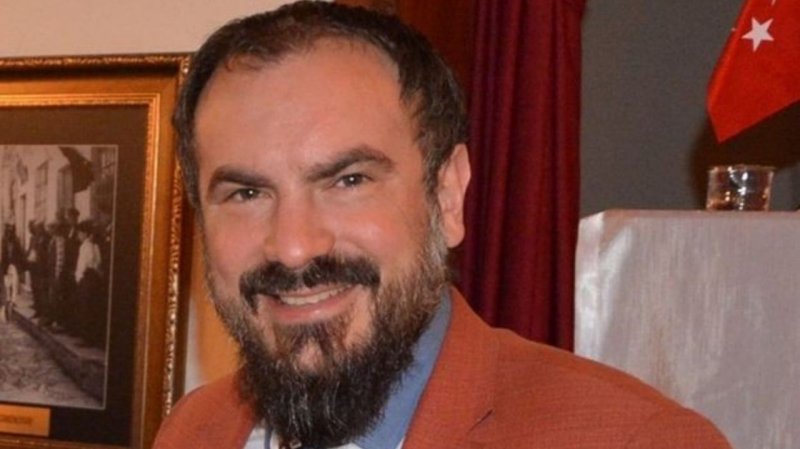Amid the rapid geopolitical transformations reshaping the Middle East and Eurasia, it is becoming increasingly clear that traditional alliances are fading, giving way to new axes of interaction – flexible, pragmatic, and based on mutual vulnerability and mutual benefit. Türkiye, Russia, Azerbaijan, and Syria, four nations whose historical destinies have repeatedly intersected through both conflict and compromise, once again find themselves at a crossroads of interests, where issues of security, sovereignty, and infrastructural development merge into a single equation.
This was the focus of News.Az’s discussion with Mehmet Perinçek, a well-known Turkish scholar, Doctor of Historical Sciences, and visiting professor at Moscow State University’s Institute of Asian and African Studies.
– Mr. Perinçek, why do you insist that the security of Türkiye, Syria, Russia, and Azerbaijan are “communicating vessels”? Don’t these countries have very different interests?
– The idea of “different interests” is a myth that arises when we look at the map with a ruler instead of a compass. The region’s compass points to one fact: whoever controls the communication lines and energy nodes from the Black Sea to the Eastern Mediterranean sets the agenda. Türkiye, Russia, Azerbaijan, and Syria geographically “stitch together” this belt.

Source: Reuters
If controlled chaos, whether separatism or terrorism, erupts in one segment, neighboring countries are forced to spend resources extinguishing the “fire.” But if we build “corridors of guaranteed interdependence” – trade, transport, and technologica, chaos simply has no room to exist.
The common denominator is straightforward: territorial integrity and respect for sovereign rules of the game. This forms the foundation for a growth-oriented economy – from unblocking communications to creating joint industrial chains. From this perspective, the security of each country becomes a form of insurance for the others.
– What is the practical significance of the “Moscow track” for Damascus? Isn’t Syria at risk of becoming dependent on stronger players?
– Dependence arises where there is no balance. For Damascus, Moscow is not a form of “guardianship” but a channel for institutionalizing balance. Russia has always been integrated into the region’s equations – through the Black Sea, the Caucasus, the Caspian, and the Middle East. It has already shown its ability to turn confrontation into a manageable configuration. Consider the Astana platform and the de-escalation mechanisms.

Source: CNN
For Syria, the key task now is to consolidate sovereignty in practice: restoring control over its territories, eliminating armed groups, and shutting down the “grey economy” of war. This cannot be achieved by force alone. Joint patrols, border control, legal harmonization, humanitarian corridors, and, later, investment in reconstruction are all necessary.
The “Moscow track” allows Ankara and Baku to participate in this process, contributing logistics, energy, and infrastructure projects. As a result, Syria gains not a single “powerful patron,” but a network of partnerships in which each actor has a stake in the integrity of Damascus, because their own development corridors depend on it.
– How do you envision a potential Türkiye–Russia–Azerbaijan–Syria alliance in practice? What three steps could serve as “anchors” of the new regional architecture?
– I see three “anchors” that can transform policy from declarations into actionable mechanisms. First: security and law. This includes joint coordination centers for border security and counterterrorism; synchronization of “red lines” against separatism; exchange of operational information; and a roadmap for disarming illegal groups, with guarantees of amnesty for those who lay down their arms and return to civilian life. This is a policy of “zero tolerance” for fragmentation and parallel authorities.
Second: infrastructure as the main component of peace. This involves unblocking and linking the “North–South” and “East–West” corridors; modernizing checkpoints; creating joint logistics hubs; enhancing energy connectivity; and restoring Syria’s transport arteries. When it becomes cheaper and easier for trucks, trains, and cables to move through law rather than chaos, peace becomes more profitable than war.

Source: TASS
Third: the economy of reconstruction and humanitarian reintegration. This includes funding for housing and critical infrastructure restoration; establishing joint industrial parks employing local populations; implementing repatriation and amnesty programs; and supporting educational and cultural initiatives. The revival of a normal economy is the best safeguard against radicalization.
Taken together, these measures form an anti-fragmentation alliance – not aimed “against” anyone, but “for” the region’s integrity, development, and sovereign right to define its own agenda without external tutelage.
If these countries share a common destiny and common interests, they must transform that community from rhetoric into tangible infrastructure, first and foremost in security, logistics, law, and the joint economy. In this sense, the Syrian leadership’s visit to Moscow is not a mere episode, but a key assembly point for a new regional architecture, with Ankara, Moscow, Baku, and Damascus acting as co-architects. The intrigue of the moment lies in this: the window of opportunity is open, and the question is who will be first to turn it into a door.
